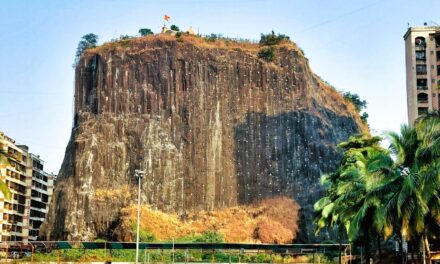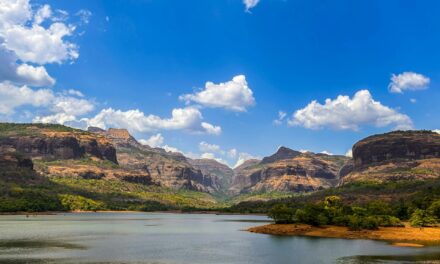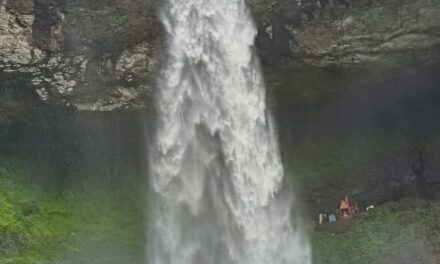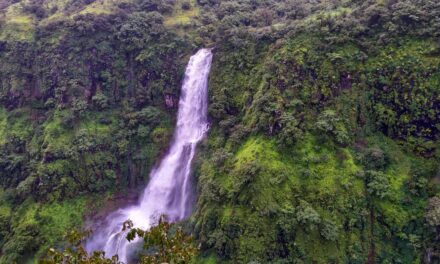Welcome to Bhedaghat, a small but beautiful town in Jabalpur district of Madhya Pradesh. It is famous for a gorge, where the mighty Narmada flows through deep canyons. It is also called as Grand Canyon of india.
One of the main attractions here is the Marble rocks. The marble here is soft and the flow of the river has carved out about 8 km of this gorge. Just imagine a view, a Narmada River flowing serenely through a stunning canyon of white marble rocks, creating a breathtaking valley carved from limestones. And as you are moving along a river in a boat, the tall marble rocks on the both sides seem to change color and shape as the sunlight dances on their surface.
From Classics to Blockbusters: Bhedaghat’s Cinematic Legacy
This attracts not only photographers or tourists but also filmmakers. You might think the place looks familiar, yes. You have probably seen it in films like ‘Jis desh mein ganga behti hai’, the song “raat ka nasha abhi” from Ashoka, Hritik roshan’s ‘Mohenjodaro’, or Shahrukh Khan’s famous ‘Dunki’. Bhedaghat has worked in many films and has made several movie scenes iconic. Even filmmakers could not refrain from shooting their iconic movie scenes at this place. So next time you visit bhedaghat, don’t forget you are meeting a superstar.
Dhuadhar Falls:
The narmada river after cutting through the 8km marble rocks, plunges 30 meters creating that looks like smoke rising from the water. And hey, “Dhua” means smoke, and “Dhar” means flow. Now you know why it’s called Dhuandhar!
Dinosaurs Once Roamed Here!
If you’re a fan of dinosaurs, you’ll love this – Bhedaghat-Lametghat is also famous for its dinosaur fossils! Yes, millions of years ago, these ancient creatures walked in the same valley where we now enjoy boat rides and scenic views. In 1828 the first Dinosaur fossil was collected from Lameta Bed by William Sleeman.
The Holy and Mighty Narmada
The Narmada River, often called the “lifeline of Madhya Pradesh and Gujarat,” is no ordinary river. It flows westward (one of the few in India to do so!) and originates from Amarkantak, a holy spot in Madhya Pradesh. Narmada is the 5th largest river in India and is considered as the oldest river of india. It flows for a distance of 1312 km before meeting the Arabian sea at the gulf of Khambat.
The mighty Narmada River, in all her grandeur, has even graciously given space to the world’s tallest statue, the Statue of Unity, as if saying, ‘Come, stand tall and watch over the lifeline of India.
Narmada Valley
The Narmada valley was formed due to geological movements caused by the uplift of the Himalayas., between the Satpura in the south and the Vindhyan range in the north. Narmada river is one of the rivers that flow in a rift valley and acts as a divider between north India and south India. So, when someone asks, “Where does north India end, and south India begin?” you can just point to Narmada and say, “Right there, boss.”
The Sacred Confluence:
At Bhedaghat, the Narmada meets the Banganga, making it a place of spiritual significance.
Best Time to visit:
Between October and March, when the temperature is cool and Narmada River is calm, allowing for safe and enjoyable boating through the Marble Rocks.
Narmada Mahotsav:
Every year, a two-day Narmada Festival is organized on the occasion of Sharad Purnima at Bhedaghat. This vibrant celebration includes a variety of activities such as a laser show, cultural programs like singing and folk dance performances, and moonlight boating along the serene Narmada River.
How to Reach Bedaghat?
Nearest city is Jabalpur, approx.15kms away
Nearest Railway station: Bedaghat-approx 3 kms away
Nearest Airport: Jabalpur-approx 25kms away
Bhedaghat isn’t just a destination; it’s an experience. Whether you’re a geologist, a Bollywood buff, or someone who just loves pretty places, this town has something for everyone.
Explore, Experience, Traveltage 📍
Reference-https://whc.unesco.org/en/tentativelists/6531/





